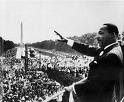Author's Note: This was a summative piece about Yann Martel's Life of Pi. I responded to the question "What is Life?"
What is Life? It may seem like a tough question, it may seem easy. It doesn't matter what you think the depth of the question is, you have grossly underestimated it. Some look at Life as a story, some say it is our time to make our mark on this world. Life is incomprehensible, can be looked at as easily as it’s the time between birth and death, or as in-depth as our time of sensual overload. In Yann Martel's Life of Pi, Martel, illustrates this idea over Pi Patel's solo journey over the vast Pacific Ocean. I exist, I live, I can't for certain say the same for you. Existence is real, and Life is what we perceive from our time of existence.
Des Cartes once said, "I think, therefore, I am." He knew that he existed, and was unsure of anything beyond that. As I think, I know I am, but I do not know whether the things around me are. Is this time that I see as reality, real? These objects around me, they seem real, but I am unsure if they are. My feeling of reality could be a dream of a different me. In the book, Pi is on a lifeboat with a vicious tiger, yet he was never eaten. Is it because the tiger was nice? The tiger was literally starving, but not once did it try to kill Pi, so was it a figment of his imagination, nice, or the personification of his fear of dying alone?
When we die what happens to us? Some people have spent their entire lives grappling with the question; Pi a very religious boy is very okay with dying, he knows, that there will be something for him. Whether it be the arms of Christ, Shiva, telling him that his time is up, or even a grim reaper figure coming to get him. When Pi is with Richard Parker, Pi comes to terms with the idea that Richard Parker will most likely kill him. If death is an unknown, but we don't live life to the fullest, what is life's purpose?
Life doesn't have a purpose, unless we give it one, and even we are unsure of what Life is. The possibly fictitious illusion around us may be life, but even if it isn't, we must seize the moment. To seize our existence is all that we can ever possibly to wish to do.
Author's Note: This is a response to the prompt 'Discuss any of Pi's behaviors over any part of the last reading, and how it serves as a metaphor; what aspect of life or human behaviors is that action taken by Pi asking us to examine.'
In chapter 89 of Yann Martel’s Life of Pi, Pi Patel has been stranded on a life boat, and his sole companion is a Bengal Tiger. When Pi recounts his story, he tells of the things he noticed, but Martel weaves in many extended metaphors into the text, some metaphors were even tabooed at the time the novel was written. When common actions are shared by that of a fictional character, thought of only to show humanity's mind, you must realize what you are doing, and what you must do to get where you want to be.
When Pi was discussing how the sun had bleached everything, and taken their luster, it seemed as if he was metaphorically talking about how Life wears everything out. Pi then said that he had tried to stop the relentless barrage from the sun, by greasing everything with turtle fat, but to no avail. This showed how ever hard you try, life will find you and wear you down until Death can take you as its prey. When Pi tried to cool himself with the oceanic water, it seemed to represent Religion as the escape of Life’s wear, but even that could not save Pi, and it seems Martel is then obscurely saying that no matter what religions say, they cannot save you. When Pi realized he could not be saved, he secluded himself from Life, so that he mustn’t suffer, but to live Life fully, you must take the punishments with the joy.
When Pi’s actions represent ours, we must see the comparison, and notice, how these could benefit us, or more likely, hinder us. If we live to have only pleasure, it loses its joy, and we must realize that life is balanced, at all times even if it doesn’t seem it.
Author's Note: This is a short response to Pi Patel's description of his science teacher Mr. Satish Kumar.
When Pi began describing Mr. Kumar as reading the description of each animal, and accepting it, seemed like it symbolized Kumar's stance as an atheist. One where he accepted all ideas, and how they can believe what they choose. When Kumar also said that "...The zoo is my temple..." he was somewhat saying that he saw all religions and beliefs equally, but most from afar, and just as an observer.
Pi respected Kumar, as the Ying to Pi's Yang. When Kumar said "Religion is darkness," Pi thought how that could ever be possible. This seems a completely natural reaction for a boy brought up heavily depending on religion, but as Kumar began explaining his reasoning behind his committed atheism, Pi began to see the validity of the opposing argument. It kept him balanced and open to all aspects of Life.
